Earned Value Management: An Introduction
Earned Value Management relies on maintaining a time-phased budget baseline (in hours, dollars, or other measurable units). This time-phased budget is known as Planned Value (PV), or Budgeted Cost for Work Scheduled (BCWS). Earned Value Management requires quantifying the “value” of progress over time using the same unit of measure that was used to plan the budget. This generally requires a well-built Integrated Master Schedule (IMS) to start with, and often involves integration of the schedule with an Earned Value or project financial tool.
The examples below show how using Earned Value Management can improve analysis of a project, especially as it relates to cost comparisons, over traditional project financial analysis.
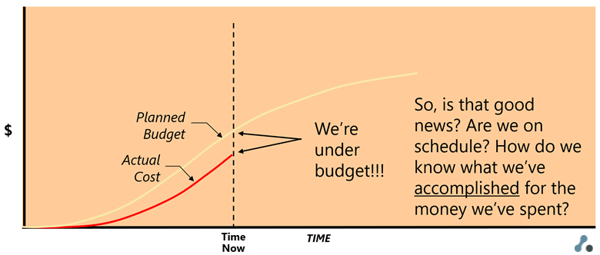
Figure 1. Typical Budget vs. Actual Comparison
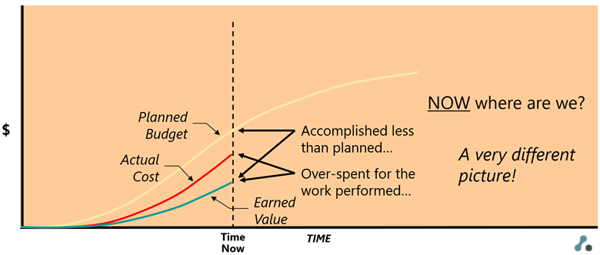
Figure 2. Earned Value Comparison
An Earned Value Management System provides a more accurate assessment of project financial status than simple comparisons of budget and actuals and can even improve measures of schedule progress by quantifying the volume of work completion.
What is Earned Value?
There are several concepts that use the term Earned Value. We will explore each of these.
1. Earned Value (EV)
Earned Value (EV) is a project Key Performance Indicator (KPI) that represents a quantified value of the work accomplished to date. Earned Value is calculated as the sum of the budget for all completed work on a project or portion of a project (i.e., a WBS element, Control Account, or Work Package). This includes the budget of all work that is 100% complete, plus partial budgets for work that is in-progress.
The amount of Earned Value calculated for work-in-progress is based on a pre-assigned calculation rule called an EV Method (or EV Technique). EV Methods are used to provide objective measures of progress and avoid subjective estimates of completion that can introduce bias into the calculations.
Some examples of common EV Methods are:

Figure 3. Some Examples of Common EV Methods
The above EV Methods are known as discrete methods, because they are used to measure the accomplishment of definable work products or outputs. Sometimes project work has no measurable output. For example, operational support work. In these special cases, Earned Value may be calculated based on the passage of time by setting Earned Value equal to the Planned Value. This is known as Level of Effort and should be used sparingly on a project.
The US Department of Defense, and some other federal agencies, refer to Earned Value as Budgeted Cost for Work Performed (BCWP). This is seen by many as a more accurate description of the term, since “value” implies a commercial monetary value or stakeholder value. While commercial or stakeholder value is also important, that is not what the EV / BCWP KPI is designed to measure.
2. Earned Value Analysis (EV Analysis)
Earned Value Analysis (EV Analysis, or EVA) is the act of using the Earned Value metric, along with other project KPIs, to identify and quantify problems, assess risk, and forecast costs at completion. An experienced EV Analyst utilizes basic and advanced techniques to assess project performance and supply project managers with the information they need to make critical decisions.
Basic Earned Value Analysis
One of the most basic analyses that can be done with Earned Value is to compare Earned Value (EV) to Planned Value (PV) using the following formula:
EV – PV = SV
The result of this calculation is Schedule Variance (SV). SV provides a quantifiable measure of the volume of work, in terms of budget, that is behind schedule. A negative SV indicates that the project is completing less work than planned, while a positive SV indicates the project is completing more work than planned. A significant negative SV could indicate resource issues on the project that need to be addressed.
Another basic analysis technique is to compare Earned Value (EV) to Actual Cost (AC) using the formula:
EV – AC = CV
This calculation yields the Cost Variance (CV). CV provides a very useful measure of whether the project is meeting its budget targets. A negative CV indicates that the project is spending more money than planned on the work that is being performed, while a positive CV indicates the project is spending less money than planned. A significant negative CV could be an indicator that the project will not complete within budget.
These values can also be expressed as percentages (ex. SV% and CV%), or as indices (ex. Schedule Performance Index – SPI, Cost Performance Index- CPI) to provide insight into the significance of the variances and help project managers focus on the most important problem areas for corrective actions.
Advanced EV Analysis
While basic EV Analysis can help a project manager identify problem areas on a project, advanced EV Analysis can be used as a powerful forecasting tool. One of the most common ways that Advanced EV Analysis is used is to perform trend analysis. Looking at CV and SV trends over time, for example, can provide valuable insight into the rate at which a project is improving or slipping, and whether corrective actions taken are effective.
Perhaps one of the most powerful applications of advanced EV Analysis is to forecast cost and schedule at completion. This can be done by factoring EV performance when updating an Estimate to Complete (ETC). The ETC, when added to Actual Cost (AC) yields an Estimate at Complete (EAC).
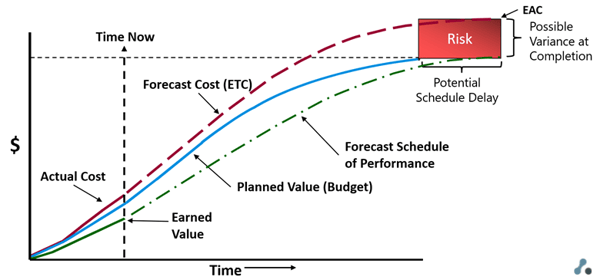
Figure 4. Using EV Data to Forecast Project Performance
Using advanced EV Analysis techniques, an EV Analyst can develop independent Estimates at Complete (iEAC) that have been shown to have a high degree of accuracy on large defense programs. There are many different iEAC formulas to generate best-case and worst-case estimates (EAC boundaries), and most-likely estimates, depending on the type of project and the phase that it is in. There are about 12 iEAC formulas, the most common of which is:

To learn more about EV Analysis, additional EV metrics and formulas, and how to effectively utilize them to manage project performance, take a look at some of our EV Analysis courses.
3. Earned Value Management (EVM)
Earned Value Management (EVM) is a project performance management methodology utilizing Earned Value (EV). Earned Value Management refers to the discipline of applying Earned Value and Earned Value Analysis as an integral part of managing a project. Performing Earned Value Management on a project requires that the project Scope, Schedule, and Budget be integrated into a time-phased Performance Measurement Baseline (PMB). Once established, the PMB is placed under change control to ensure that scope, schedule, and budget remain integrated.
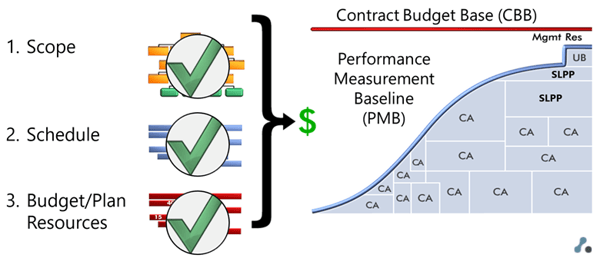
Figure 5. A visual representation of the PMB
Earned Value Management utilizes the concepts of Undistributed Budget (UB) and Management Reserve (MR) as part of the methodology to manage the PMB. This allows the project manager to add or remove scope, and schedule, along with the associated budget, to or from the PMB in a disciplined manner as changes occur on the project.
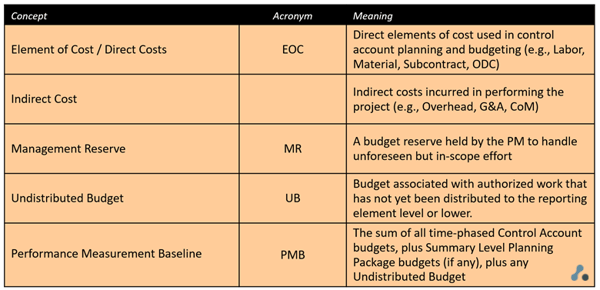
Figure 6. Some of the budgeting terms used with Earned Value Management (EVM)
Within the US Department of Defense (DoD), as well as the project management industry at large, there is a movement to re-brand Earned Value Management as Integrated Program Management (IPM). This reinforces the concept that Earned Value Management is not just about generating the Earned Value KPI, but about integrating cost, schedule, and other related project management disciplines, together with risk management, to effectively manage a project.
To learn more about Earned Value Management, take a look at our Principles of Earned Value Management course.
4. Earned Value Management System (EVMS)
An Earned Value Management System (EVMS) is the people, processes and tools used to perform EVM for an organization.
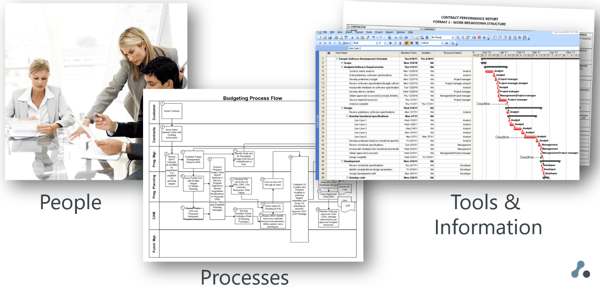
There are several published standards relating to Earned Value Management Systems. While all these standards are generally compatible, there are differences in terminology (generally due to different industries served), and the level of prescriptiveness for each standard varies.
EIA-748
EIA-748 is a set of 32 guidelines that define a proper Earned Value Management System. These guidelines are maintained and updated by the National Defense Industrial Association (NDIA) and published by SAE-International. EIA-748 has been adopted by the US federal government. The OMB Circular A-11, Part 7 (Capital Planning Guide) requires federal agencies to apply an EIA-748 EVMS on major capital investments and the Federal Acquisition Regulations (FAR) and Defense Federal Acquisition Regulations (DFAR) require US government contractors to implement it on contracts greater than $20M.
Note that EIA-748 is often incorrectly referred to as ANSI-748. The EIA-748 standard did not renew its ANSI accreditation after its 2007 update and is no longer considered an ANSI standard. The NDIA IPMD recently voted to investigate renewing ANSI accreditation, so this may change in the future.
PMI – ANSI 19-006-2019
The Project Management Institute (PMI) has published its own ANSI standard for Earned Value Management Systems. This standard is considered to be less restrictive and more tailorable than EIA-748 and meant to apply more broadly across industries. The authors of this standard took care to ensure that it did not conflict with EIA-748, so an organization can implement the PMI standard for the organization as a whole, while still applying EIA-748 to contracts that require it.
AACE – Recommended Practices
AACE International has published a series of Recommended Practices (RPs) that are applicable for Earned Value Management Systems. While EIA-748 describes the attributes that make up an EVMS, the AACE RPs provide detailed recommendations on procedures to implement and operate the system. Examples include guidelines on Work Breakdown Structure (WBS) development, required skills for personnel, how to properly analyze a critical path, etc.
AACE International has a large member base within the Engineering, Procurement & Construction (EPC) industry, so many of the best practices have grown out of that arena. The US Department of Energy, whose contractor base is also made up largely of EPC firms, has incorporated AACE RPs into its own practices.
ISO – 21508:2018
The ISO EVMS standard is somewhat new to the scene and was published in response to demand for an international standard. ISO 21508:2018 does not provide guidance on the use of specific processes, methods or tools in the practice of earned value management, focusing instead on terms and definitions, benefits of an Earned Value Management System, an overview of the types of processes used, and the basic requirements of an Earned Value Management System.
Regardless of the standard(s) you choose to apply, your system will be defined by the people, processes, and tools you put in place.
People
While it is certainly possible for one experienced project controls specialist to do everything necessary to operate an Earned Value Management System, especially on smaller projects, larger, more complex projects require multiple roles to effectively manage using Earned Value Management. This includes the following core project roles:
- Project/Program Manager
- Master Scheduler
- EV Analyst
- Control Account Manager
The people performing these roles must be fully trained in the organization’s processes and procedures for Earned Value Management. Additional roles within the organization must support the Earned Value Management process and need to be trained as well. These may include:
- Financial analysts
- Contract managers
- Estimators
- Manufacturing resource planners
- Material/procurement specialists
- Functional/resource managers
Processes
Earned Value Management business processes document what needs to be done, how to do it, and who is responsible. Clear processes, consistently practiced, ensures the system produces timely and accurate data. Typical Earned Value Management business processes cover the following categories
- Organizing (project initiation)
- Scheduling
- Work/Budget Authorization
- Accounting
- Managerial Analysis
- Revision/Change Control
- Indirect Cost Management
- Material Management
- Subcontract Management
If an Earned Value Management System is subject to validation/certification, a System Description is used to describe and summarize the system so both the external reviewers and the users of the system have a common understanding of the Earned Value Management System. Since EVM-related processes are often embedded within other business processes across the organization (for example, accounting or procurement), a System Description is a great way of pulling all information about the Earned Value Management System into one place. The System Description is typically supported by more detailed processes and procedures, as demonstrated in the table below.
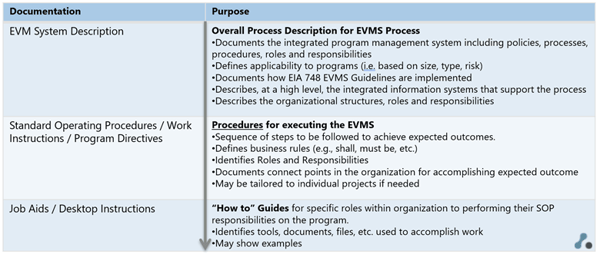 Figure 6. A typical hierarchy of EVM business processes
Figure 6. A typical hierarchy of EVM business processes
Tools
The third component of an Earned Value Management System is the tools, and the information produced by them. A tool can be as simple as a spreadsheet, or as complex as a fully integrated Enterprise Resource Planning (ERP) system. Most scheduling tools on the market will calculate simple Earned Value metrics. These metrics are usually limited to hours and whole dollars (no complex direct and indirect rate calculations), are limited to percent complete for progress (no other discrete EV Methods), may not support fiscal calendars, don’t have capabilities to manage and log budget changes, and are limited in Earned Value analysis and reporting capabilities. For those organizations that require an EIA-748 compliant Earned Value Management System, or IPM reporting requirements for US government contracts, additional EVM software may be required.
The core software used in an Earned Value Management System consists of:
- Scheduling software (ideally Critical Path Methodology scheduling)
- Earned Value or project financial software
- Business Intelligence / Reporting software
The above software is often integrated with other corporate business systems as depicted below. Though integration does not have to be automated, it is important to ensure that data reconciles across systems.
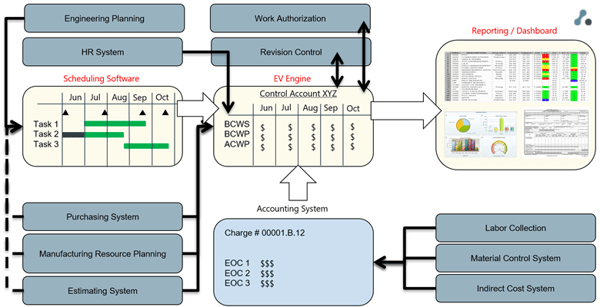 Figure 7. An example of an EVMS fully integrated with corporate business systems
Figure 7. An example of an EVMS fully integrated with corporate business systems
Is EVM Right for Your Project?
It is important to note that Earned Value Management is not best for all project-types. It is best used on development-type projects that are process-driven (what PMI now refers to as "predictive projects"). For example, construction projects, engineering/manufacturing projects, some types of R&D projects, etc. The effort required to maintain a good time-phased baseline may not be worth it for small, short-term projects, or projects with low cost/schedule risk, or projects where the scope is highly variable or not well defined.
The following types of projects are ideal for application of a full-scale EVMS:
- Large, complex development projects
- Engineering & construction capital investments
- Major cost-plus contracts (usually those over $20M in value or otherwise high-risk)
The following types are projects may not be suitable for a full-scale EVMS:
- Software projects using Agile methodologies
- Rapid prototyping projects
- Operational/sustainment/services projects
- Small, short-term projects
- Very low risk projects
- Projects with a lot of fixed-price procurement/sub-contracts
This is not to say that the above project types should not apply any form of Earned Value Analysis. In many cases, the above types of projects could benefit from a scaled-down or tailored application of Earned Value Management. Some additional resources to help with this are:
If you would like to learn more about Earned Value Management, take a look at our training courses.
Are you considering implementing Earned Value Management but are unsure of where to start? We can help. Contact us for a free consultation - Give Us a Call or  .
.
Topics: Aerospace & Defense, Energy, Utilities, Oil & Gas, Engineering & Construction, Earned Value Management (EVM), Integrated Program Management (IPM), Technology, Project Portfolio Management (PPM), Government & Public Sector, forProject Technology, Enterprise Project Management (EPM), Recent Articles

By Michael Breuker
Michael is President of Pinnacle Management Systems, a leading project management focused consulting firm. He has over 28 years of program management experience, including implementation of Earned Value Management and Enterprise Project Management Systems. Michael is a Microsoft Certified Professional and certified Primavera trainer and consultant. He is also an AACE certified Earned Value Professional (EVP), and an APMG IPPM certified instructor. Michael is an active participant with the NDIA Integrated Program Management Division (IPMD) and the associated Civilian Agency Industry Working Group (CAIWG) where he helped author the NDIA EVMS Scalability Guide. He currently serves as the Dean of Scheduling for the College of Performance Management (CPM) and is the proud recipient of the 2024 CPM President’s award.
